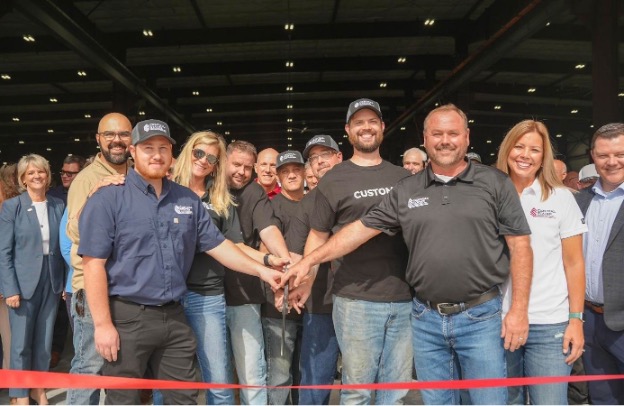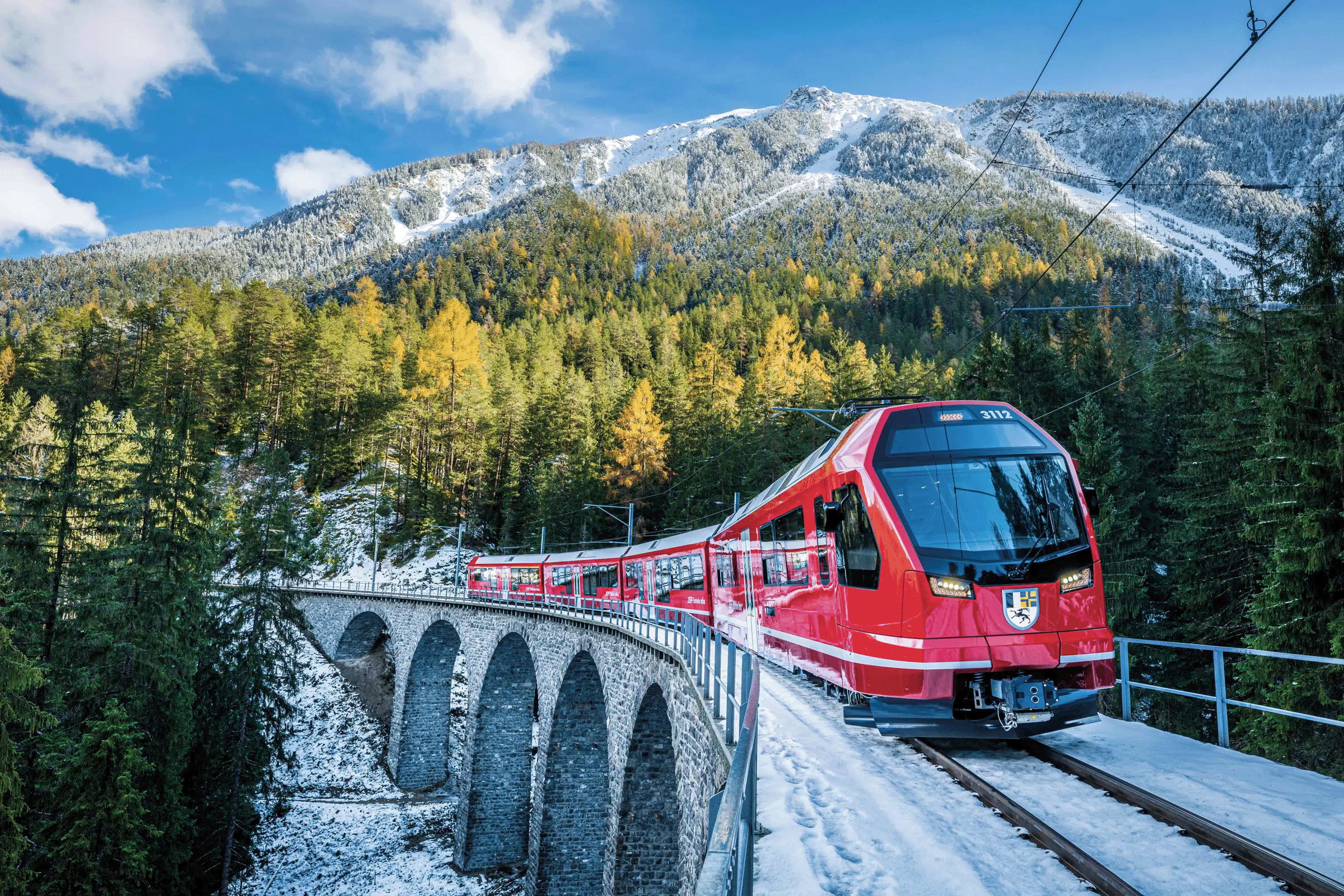Working on the Railroad: Five Questions for Union Pacific’s Nathan Anderson

July 14, 2020
Union Pacific has 1,269 miles of track in Utah and has had a presence here from more than 150years. We caught up with Nathan Anderson, Senior Director, Public Affairs, to find out how the railroad is evolving and adapting.
Big picture – Please give us an overview of UP’s operations.
NA: Our rail network connects more than 32,000 route miles in 23 states across the western two-thirds of the country, providing a critical link in the global supply chain. We move the goods families and businesses use every day, including the food we eat, the cars we drive, the chemicals to clean our water, and the steel and lumber to build our communities.
The work we do moving customers’ goods is not possible without the hard work and dedication of our approximately 37,500 employees. Employees work in a wide range of positions from those who operate trains and maintain equipment, to those who work in an office setting. Over the last 10 years, from 2010 to 2019, Union Pacific invested $34.5 billion in our network and operations, supporting America’s transportation infrastructure and enabling economic growth.
Union Pacific owns, operates and maintains its own infrastructure. In 2019, our capital program totaled $3.2 billion. We believe the more we invest in building a safe and efficient railroad today, the better our infrastructure can support communities going forward. By 2045, U.S. freight shipments will increase by more than 40% and America’s population will grow by 70 million.[1] Union Pacific has capacity to safely and reliably move additional goods, decreasing truck congestion on the nation’s already jammed highways and interstates.
Our national rail system is critical infrastructure but perhaps under appreciated. What are some aspects of UP’s operations that people might not be aware of?
Railroads are one of the most fuel efficient means of transportation. On average, trains are up to four times more fuel efficient than trucks. That means moving freight by rail instead of truck reduces greenhouse gas emissions by up to 75%. Those emissions are directly related to fuel consumption. On average, Union Pacific moves a ton of freight 444 miles on a gallon of diesel fuel. If 10% of freight currently moved by the nation’s largest commercial trucks was transported by rail instead, fuel savings would be more than 1.5 billion gallons per year and annual greenhouse gas emissions would fall by more than 17 million tons – equivalent to removing around 3.2 million cars from highways for a year or planting 400 million trees.
Utah’s advantages – We continually tout ourselves as the “Crossroads of the West.” How does Utah fit into UP’s overall operations? Do we deserve the title?
Union Pacific’s presence in Utah can be summed up in one word: “Done.” Promontory Summit marks the culmination of arguably one of the most important feats in America’s history, the completion of the transcontinental railroad – where east met west. Since May 10, 1869, Union Pacific’s operations have grown and developed Utah. Today, Utah is a vital crossroads for Union Pacific. UnionPacific has an intermodal ramp located in Salt Lake City near the I-80/I-15 junction, which connects the largest intermodal network in North America with the most direct rail services from coast to coast. Our intermodal service has access to all West Coast and western Gulf Coast ports with on-dock or near-dock service offering consistent and predictable services through truck-competitive reliability.
Last year, Union Pacific proudly joined the state of Utah and in celebrating the 150th anniversary of the transcontinental railroad’s completion. We marked the anniversary with a celebration that paid homage to our past and the remarkable achievements that connected the nation, while reminding us of the enormous responsibility we have for the country’s future.
We are hearing a lot of discussions about a manufacturing renaissance in the U.S. as companies and consumers seek greater control of supply chains. Incidentally, I’ve been without a microwave since early April and can’t get one delivered due to overseas production and distribution issues.
The Utah Inland Port will facilitate more companies bringing manufacturing, distribution, and industrial processing to Utah, whether that’s at the main inland port in SaltLake City, or at a satellite location. Utah’s industrial infrastructure (water, power, roads, etc.) along with a willing and capable workforce make the area attractive. The port puts some definition around how all of those resources can work together to create a strong business draw to the state... And what some of us wouldn’t give to have a local microwave manufacturer!
Railroads have been around for nearly two centuries. What new technology is the industry exploring, particularly in terms of sustainability? Speed? Drones?
New locomotives that meet the EPA’s stringent Tier 4 emissions standards have been added to UP’s fleet over the last few years, reducing particulate emissions by as much as 90% during operations. The new locomotives, combined with new aerodynamic technologies like Arrowedge, dramatically impact fuel efficiency. Arrowedge was developed in coordination with students from Brigham Young University.
It’s clear our climate is changing, and Union Pacific is taking action to reduce our GHG emissions. We are committed to setting targets through the Science Based Targets Initiative, which independently assesses corporate emissions reduction targets in line with what climate scientists say is needed to meet the goals of the Paris Agreement – limiting global warming to well below 2°C above pre-industrial levels. We believe this is an important step to help us determine how much and how quickly we need to reduce our emissions, as well as anticipate future policies and regulations. We know meeting our goal will require us to work with locomotive manufacturers to lobby for new technology. We also understand reducing our GHG emissions isn’t limited to our locomotive fleet. There are other ways we can eliminate carbon dioxide. For example, we purchased nearly 14,000 square yards of carbon neutral flooring in 2019, resulting in the retirement of 120 metric tons of carbon dioxide.
Unmanned Aerial Systems (UAS), or drones, are part of Union Pacific’s safety tool kit, collecting valuable information at derailment sites and natural disaster incidents. This allows us to assess our infrastructure and respond while keeping employees out of harm’s way. While we use live feeds, we also utilize drone data to create 3-D images. This helps our team find an incident’s root cause and, ultimately, mitigate future issues. Union Pacific began training and supplying its police officers, known as special agents, with drones equipped with a loud speaker and thermal technology. They allow special agents to observe and speak with people trespassing along our right of way, often in remote areas. The technology is also used for crowd control, general train and right-of-way inspections, as well as crime prevention and control.
Bonus Question - What are some surprising or positive things you’ve seen during the COVID crisis?
Union Pacific moves approximately 650 long-haul trains per day across its 23-state system, and many are carrying essential items to support the country.
We also are proud of the way our teams have worked to find unique solutions to pandemic-related challenges. For example, Union Pacific’s Engineering and Supply Chain departments formed a cross-functional team to source more than 400,000 ounces of hand sanitizer in 4-ounce and 8-ounce bottles. It took a team to gather the raw materials, including rubbing alcohol, hand soap and aloe vera gel. Union Pacific's Bridge Inspection team found a source of 48,000 squeeze bottles. We then turned to a local brewer and distillery in Omaha, Nebraska, which already was producing hand sanitizer for first responders and hospitals, to mix and package the railroad’s sanitizers. The product was then distributed throughout the system to train yards, offices and warehouses.
Union Pacific proudly stepped up to help hundreds of communities with local grants through its Community Ties Giving Program. The COVID-19 Relief Grants can be used to address critical community needs associated with the pandemic, including general operating support.
An additional $5 million in funding was added to the local grants program to provide additional support. Grants are traditionally awarded in Union Pacific’s three philanthropic priority areas: safety, workforce development and community spaces, but this year, much of the support was directed to COVID-19 relief. In an effort to expedite funding and address immediate needs, 2020 grants were awarded in waves with 620 organizations receiving support, of which more than $267,000 in support went to Utah nonprofits.
From a corporate perspective, we will have a more refined playbook on pandemic response and the associated enterprise risk. We had one from the swine flu, but it was inadequate for COVID-19. In that regard, scenario planning for the future will be much stronger and will help us continue to be agile.
For our employees who are able to work from home, we anticipate continued flexibility. Prior to the pandemic only a small percentage worked from home; however, once employees return to the workplace, we don’t believe it will be uncommon to have 25% to 30% of these employees working remotely on any given day.
[1] Source: U.S. Federal Highway Administration






